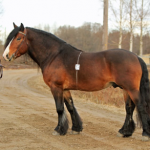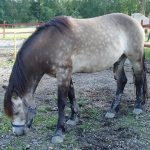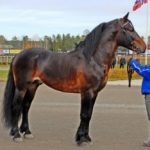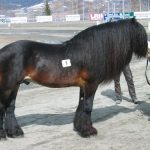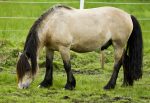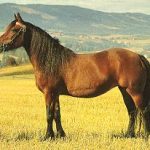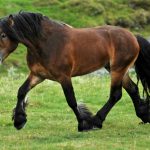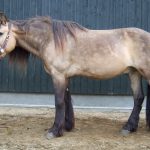Dole Gudbrandsdal
The Dole Gudbrandsdal is a Norwegian horse breed and is the most widespread breed in Norway, today. With a strong and robust stature, mainly used for heavy draft work, it is one of the two subtypes of the ‘Dole’ horses (with the other subtype being the much lighter Dole Trotter) and is considered to be the original Dole horse. This breed has often been crossed with other breeds to create new strains (e.g. the Sokolsky Horse) for riding and racing purposes.
Dole Gudbrandsdal Pictures
- Dole Gudbrandsdal Horse
- Dole Gudbrandsdal Images
- Dole Gudbrandsdal Photos
- Dole Gudbrandsdal Pictures
- Dole Gudbrandsdal
- Dole Trotter
- Dølehest
- Norwegian Trotter
Quick Information
| Other Names | Dølahest, Dølehest, Dole, Dole Trotter, Norwegian Trotter |
| Behavioral Characteristics | Intelligent, lively, fast learner, docile |
| Physical Traits | The head is quite small but heavily-built with a broad forehead and a square muzzle; the profile is straight and strong with broad withers; the neck is muscular and wide ending in a deep chest, sloping and sturdy shoulders, and a long and slightly slanting back; the limbs are short yet muscular and thick having strong hooves and solid joints |
| Coat Colors | Most common are bay and brown; relatively rare colors include chestnut, black, grey and dun |
| Height/Size | 14.1 – 16.0 hands (adult) |
| Weight | 1,290 pounds (average) |
| Common Uses | Draft and agricultural works, general and pleasure ridings, harness racing |
| Health Problems | Usually healthy with no breed-specific issues reported |
| Type | Sports horse, Show horse |
| Blood Type | Cold |
| Ancestors (Bloodlines) | Friesian Horse; strains of Arabian and Thoroughbred horses were also introduced |
| Popular Traits | Multi-talented, suitable for novice owners, sturdy, easily trainable |
| Feeding/Diet | Hay, grass, grains |
| Time of Development | 19th century |
| Country of Origin | Norway |
| Associations and Registries | Breed Pedigree |
Video: Dole Gudbrandsdal in the Horse Stable
History and Development
The Dole horses originated in the Gudbrandsdal Valley of Norway, and its history dates back between 400 and 800 years before the birth of Christ. The equine experts consider that this breed evolved from the bloodline of the Dutch Friesian horse.
By the mid-19th century, the organized breeding of the Dole horse began in Norway, and the lighter type Dole was created during this time. Both the Dole horse types had separate classes of their own and were given their respective studbooks in 1941. Breeders who would look for strongly-built draft animals would breed the hefty kind, while those wanted to create animals to compete in trotting events, bred the lighter variety.
By the beginning of the 20th century, trotting horse race became highly popular among the Norwegians and continued to be until the present day. Among the racehorses selected for these events, half are hot-blooded trotters, while the other half is cold-blooded, among which, the lighter Dole began to play a very significant role.
At present, because of frequent interbreeding, the differences between the two varieties are gradually becoming obscure. The government of Norway has taken necessary steps in breeding these horses in association with various other organizations of other horse breeds. The National Dølehorse Association was founded in 1967 and is dedicated to promoting and preserving them, especially the heavy draft variety.


